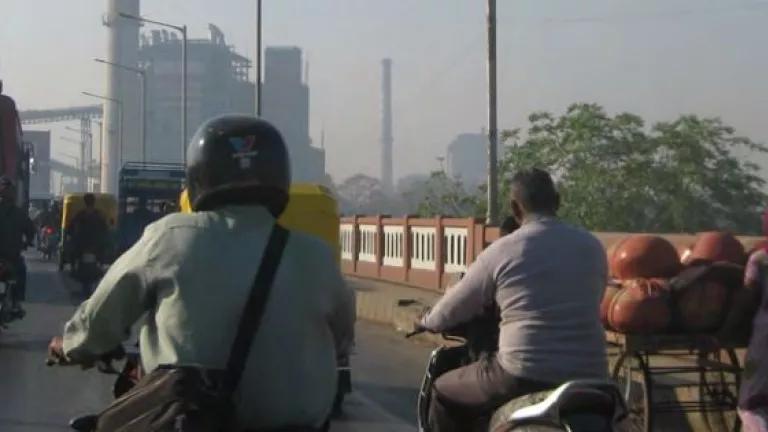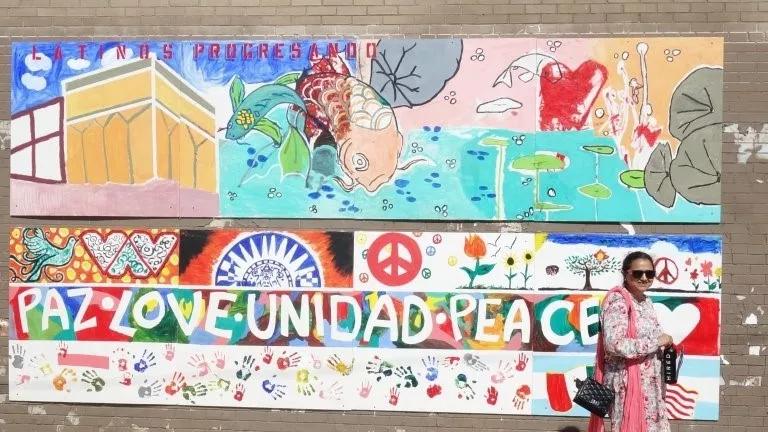Protecting Health as Cooling Demand Skyrockets in India
New research explores links between climate and cooling demand.

Co-Authored by Akhilesh Magal, Jay Joshi, and Jessica Korsh
The Indian government’s leading weather forecasting agency recently released it’s 2021 heat season forecast, and its assessment indicates that “above normal seasonal maximum temperatures are likely” over most of the country in the coming months. Since 2016 the India Meteorological Department, part of the Ministry of Earth Sciences, has published these assessments to better prepare the country’s residents for the serious health risks of extreme heat.
Staying cool during extreme heat is about more than comfort—it can make the difference between life and death. Climate change is causing longer, more frequent, and more intense heatwaves than ever before, and 2020 tied 2016 as the hottest year on record. As temperatures rise, so does the demand for air conditioning to cool the places where people live. And if we source the electricity to power that cooling from fossil fuels, the increased demand energy contributes to climate change and worsens air pollution. These unintended consequences of can have serious implications for public health.
Skyrocketing Demand for Cooling in India
Global estimates indicate that by 2030 and 2050, more than 90,000 and 255,000 people, respectively, could die prematurely each year from extreme heat waves. Historically, indoor cooling has been considered a luxury in many parts of the world. Of the 2.8 billion people living in the hottest parts of the world in 2018, only about 8% had an air conditioner (AC). However AC sales in emerging economies are booming and by 2050 around two-thirds of the world’s households could have AC. Cooling demand in India is growing at the rate of 15-20% annually. Space cooling for buildings currently dominates the total cooling energy demand in India and buildings are expected to drive major demand for cooling in the country in the future. Urbanization and the rise of incomes of the middle class in India, mean many more people will purchase their first AC.
The Need for Efficient Cooling
The India Cooling Action Plan (ICAP) was released in 2019 by India's Minister of Environment, Forests and Climate Change (MOEFCC), to achieve more sustainable, equitable, and energy efficient cooling. The plan supports five key goals: improving understanding of the implications of increased cooling demand through applied research, reducing cooling demand across sectors, reducing energy requirements of appliances, reducing demand for refrigerants, and improving training and certification of servicing sector technicians.
Meeting the demand for electricity to keep people cool and safe from extreme heat is critical. But depending on the source of power for electricity (e.g., using fossil fuels or renewable energy sources like solar and wind), skyrocketing cooling demand in India may also worsen the country’s health risks from dangerous air pollution, extreme heat, and climate change. While New Delhi’s air pollution crisis receives a lot of media attention, the majority of cities in India already struggle with unhealthy air quality. Both extreme heat and air pollution take a toll on economic development and prosperity. Children, the elderly, and people living in slums and low-income communities are especially threatened by these linked threats.
Reaping Local Health Benefits from Climate Action
NRDC and local partners are working to quantify air quality and health benefits in the city of Ahmedabad as a result of climate change mitigation and adaptation policies. About a quarter of the Ahmedabad’s population lives in the slums ringing the city. Local experts at Gujarat Energy Research and Management Institute (GERMI), Indian Institute of Tropical Meteorology (IITM), Indian Institute of Public Health-Gandhinagar (IIPH-G) are exploring future air quality scenarios for two climate change response strategies: (1) shifting fossil fuel use away from polluting coal to clean solar energy, and (2) expanding cool roof and green landcover interventions in Ahmedabad. NRDC and partners are using these local air quality forecasts to estimate the health impacts in 2030 of these different climate change response strategies, and the health benefits of actions to address climate change.
Ahmedabad initiated a pilot cool roof program in 2017. These roofs function primarily by absorbing less heat and reflecting more incoming sunlight on the roof back to the atmosphere than a regular roof surface. Depending on the setting, cool roofs can help reduce indoor temperatures by as much as 1.5 to 5°C (3.5 to 9°F) as compared to traditional roofs. These roofs may also reduce air pollution by reducing electricity demand for cooling buildings. Cool roofs can reduce the urban heat island effect and improve air quality by reducing the amount of heat gain in an urban area. Urban greening programs may also reduce the urban heat island effect and enhance local air quality. Momentum is building for expansion of India’s cool roof installations, including through the 2021 Cool Roofs Challenge led by India’s National Disaster Management Authority.
Understanding Local Demand for Cooling
GERMI is employing two methods to assess city-level cooling demand in Ahmedabad: population-based scaling and GDP/population based scaling. Both of the scaling methods are used to estimate Ahmedabad’s energy demand/breakdown across the cooling sector. Thus far, the two methodologies estimate similar shares of energy use across the cooling sector and indicate that space cooling dominates Ahmedabad’s cooling demand. To better understand local trends in energy use, GERMI is also assessing the impact of India’s COVID-19 lockdowns on electricity demand in Gujarat by comparing energy use in 2020 to trends in 2019. As India went into a complete national lockdown due to the pandemic at the end of March 2020, electricity demand was much lower than at the same time in 2019. This effect is possibly due to office buildings and businesses being closed. Over the summer as India emerged from lockdown, electricity demand approached pre-pandemic levels.
India’s experience in 2020 highlights the enormous impact that human activity has on energy demand and air pollution. The strict lockdown suspended all non-essential industrial, construction, and transportation activities, with profound impacts in northern India. A week into the lockdown, air pollution in the region dropped to a 20-year low for the time of year. Overall, India’s Central Pollution Control Board attributed improvements in air quality in 85 cities to the drastic lockdown measures. But the air quality improvements observed came with a steep human and economic toll, and November 2020, the Delhi-National Capital Region was again experiencing severe levels of air pollution. A decisive shift away from fossil fuels is vital in order to make clear skies a reality throughout the year in India.
Keeping Cool and Healthy in a Warmer World
The energy demand analyses conducted by GERMI are designed within the context of the ICAP and India’s national climate goals, to better understand seasonal patterns in cooling demand at the local level, and the downstream impacts on air quality. Improved understanding of the health benefits of efficient cooling powered by clean energy can help make the case for expanded city-level action to address the climate crisis. It is more important than ever to understand how a hotter world worsens health risks from heat and air pollution, and how smart energy choices can deliver benefits to public health.
This work is supported by the Wellcome Trust [Grant #216093/Z/19/Z].



